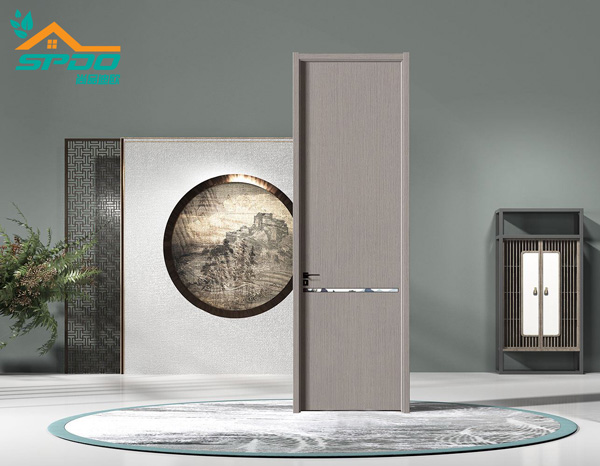What is a WPC Door? What are the advantages of WPC Door?
In recent years, the world has changed dramatically with the introduction of WPC doors. These innovative doors have become popular for their unique durability, aesthetics, and environmental friendliness. WPC, or Wood Plastic Composite, has revolutionized the way we think about door materials, providing a strong, durable alternative to traditional wooden doors.

WPC doors, short for Wood Plastic Composite Doors, represent a revolutionary advancement in interior design. These doors are made from a unique blend of wood powder and plastic materials, typically PVC, PE, or PP. This combination allows the product to mimic the look and texture of real wood while also offering superior performance.
The ingredients of WPC doors typically include:
1. Wood powder: derived from recycled wood or wood waste
2. Plastic materials: such as PVC, PE, or PP
3. Additives: including mildew inhibitors, preservatives, and antimicrobial agents
This innovative blend creates a non-organic structure that offers many advantages over traditional wooden doors. WPC doors are environmentally friendly and can be recycled, helping to promote sustainable development and reduce the impact on natural resources.
Advantages of WPC Doors
Durability and Strength
WPC doors are popular for their superior durability and strength. These doors combine the best features of wood and plastic to create a strong and durable option for modern homes. The unique blend of wood fibers and thermoplastics creates a strong and durable material that can withstand daily wear and tear, UV radiation and adverse weather conditions. WPC doors have a high load-bearing capacity and can last up to 50 years, far longer than traditional wooden doors, which typically last around 15 years.
The composite nature of WPC doors also makes them resilient to common problems with wooden doors. They are not susceptible to termite infestation, rot or fungus, which are serious issues with traditional wooden doors. This resistance to pests and aging means that WPC doors are able to maintain their structural integrity and remain beautiful for a long time.
Moisture Resistance
One of the most notable benefits of WPC doors is their superior moisture resistance. This feature makes them ideal for high-humidity environments such as bathrooms, kitchens and coastal areas. Unlike wooden doors, which can warp, swell or rot when exposed to moisture, WPC doors are able to remain stable and unaffected by moisture.
The moisture-resistant properties of WPC doors stem from their unique composition and manufacturing process. The wood fibers in WPC doors are encapsulated in a protective plastic shell during the production process, creating a barrier that prevents moisture from penetrating. This encapsulation ensures that the door maintains its shape and function even in environments with fluctuating humidity.
Low Maintenance Costs
WPC doors offer a significant advantage in terms of maintenance requirements over traditional wood doors. They do not require regular polishing, painting, or varnishing to maintain their appearance and function. This low-maintenance feature saves homeowners time, energy, and money in the long run.
The process of cleaning a WPC door is simple and straightforward. Routine cleaning with a damp cloth and mild detergent is usually all that is needed to keep it looking like new. The easy-to-maintain nature makes WPC doors a great choice for busy homeowners who want the durable beauty of a door without the frequent maintenance.
Eco-Friendly
WPC doors are an environmentally friendly choice for a few reasons: First, they are often made from recycled wood fiber and plastic materials, which reduces the need for raw wood and helps alleviate deforestation. Using recycled materials also helps reduce the generation of plastic waste.
Compared to traditional wooden doors, WPC doors are often produced more energy-efficiently, which reduces the carbon footprint. Additionally, the long lifespan of WPC doors means fewer doors need to be replaced over time, further reducing the overall environmental impact.
WPC doors also help to improve the energy efficiency of buildings. They have good thermal insulation properties, which helps to control indoor temperatures while reducing energy consumption for heating and cooling. This thermal insulation not only reduces energy costs, but also helps to reduce overall carbon emissions.
Another environmentally friendly feature of WPC doors is their recyclability. At the end of their lifespan, WPC doors can be recycled and reused, promoting a circular economy model that benefits consumers and the environment. This reusability further reduces the need for new materials and supports sustainable resource management.
In addition, WPC doors contribute to a healthier indoor environment. They do not require the use of harmful chemicals or paints that release toxic gases. Their antimicrobial properties also inhibit the growth of bacteria and mold, creating a clean and healthy living space without the need for additional chemicals.
Hot Tags: #WPC doors #What is a WPC Door



